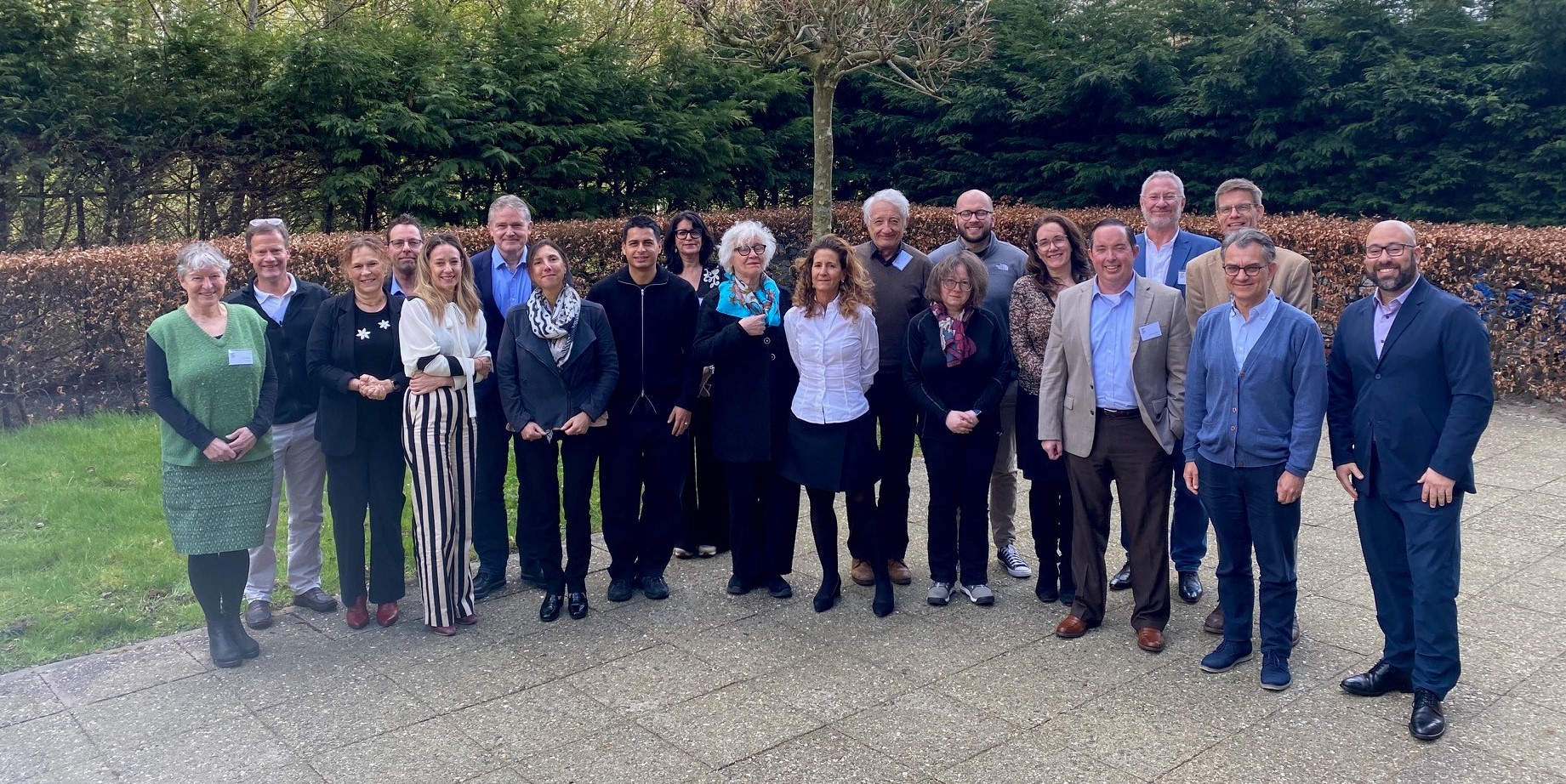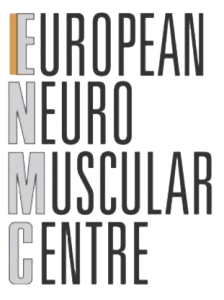Harmonization and federated analysis of myotonic dystrophy registries to model heterogeneous disease trajectories
- Number 287
- Date 28 March 2025
287th ENMC International Workshop
Location: Hoofddorp, The Netherlands.
Title: Harmonization and federated analysis of myotonic dystrophy registries to model heterogeneous disease trajectories.
Date: 28-31 March 2025
Organisers: Dr. G. Bassez (France), Prof. C. Faber (Netherlands), Prof. P. ‘t Hoen (Netherlands), Dr. N. Johnson (United States).
Early Career Researchers: D. van As (The Netherlands), L. la Fontaine (The Netherlands)
Translations of this report by:
Dutch by L. la Fontaine
French by A. Geille
Papiamentu by Prof. I. Merkies
Serbian by Dr. S. Peric
Italian by Prof. V. Sansone
Spanish by M. Wilkinson
Participants: D. van As (The Netherlands), Prof. T. Coolen (The Netherlands), L. la Fontaine (The Netherlands), A. Geille (patient representative, France), A. Guerra (Switzerland), Prof. C. Gagnon (Canada), C. Jonkers (The Netherlands), N. Lalout (The Netherlands), Prof. Ingemar Merkies (Curaçao), A. Novack (United States), Dr. S. Olmos (patient representative, United States), Dr. S. Perić (Serbia), A. Rohrwasser (patient representative, United States), Prof. V. Sansone (Italy), Prof. B. Schoser (Germany), R. Thompson (United States), E. Vroom (patient representative, The Netherlands), M. Wilkinson (Spain).
Summary:
The 287th ENMC international workshop brought together 23 people from 10 different countries, including doctors, researchers, and representatives from patient organizations. The goal of the meeting was to find better ways to use existing data on Myotonic Dystrophy type 1 (DM1) and to collect and analyse data from patients living with DM1 in the future.
Background and aim:
DM1 is a disease that becomes worse over time and affects people in different ways. It mainly causes the muscles to become weaker, but it can also affect other parts of the body, like the heart, lungs, stomach, and brain. It is still difficult to understand how the disease changes over time and how well different treatments work. Around the world, there are more than 25 patient databases that collect information from over 10,000 people with DM1. However, each database collects and stores information in its own way. Because of this, it is hard to combine the data.
The aim of the workshop was to find ways to make the information in these databases easier to find, use, and share. The group also wanted to agree on what kind of information should be collected in all databases and how to safely study the data without moving it to one place. Another important goal was to understand how to measure effects of new drug treatments over a longer period of time.
Workshop outcomes:
The workshop showed that it is very important for all databases to work together. One important step is to create a basic list of symptoms and tests that all databases should include. This would make it easier to compare results and see even small changes in the disease. The group also talked about some symptoms that are not measured well at the moment, like problems with brain function and digestion. These areas need more attention in future studies.
A method called “federated analysis” was also discussed. This allows researchers to study the data where it is stored, without moving it. This helps protect patient privacy, saves time, and makes large studies easier. These kinds of studies are important for getting new treatments approved and paid back by health insurance.
It was agreed that doctors, researchers, patients, and legal experts should all help decide what research is most important. An independent group should help guide this work. One challenge is that long-term funding is still needed to support this important work. Different ways of funding were discussed.
What it means for patients and families:
This workshop will help improve care for people with DM1. It will help doctors give more personal care and make it easier and faster to test new treatments. Patients won’t need to give the same information many times, and they will be more involved in the research. Sharing results with patients will help build trust.
Next steps:
The next steps include making sure all databases collect the information in the same way and use the same words for each measuring instrument. In this way, data in those databases can be more easily joined and analysed. The group will also look at the data we already have to see which parts of the disease are most important to track. More focus will be given to symptoms like digestion and brain function.
Another big goal is to build tools that can show how the disease changes over time. These tools will help doctors choose the best care for each patient and help researchers prepare for new clinical trials. All of this work will make the DM1 research and care system stronger and more ready for the future.
A full report will be published in Neuromuscular Disorders (PDF).

